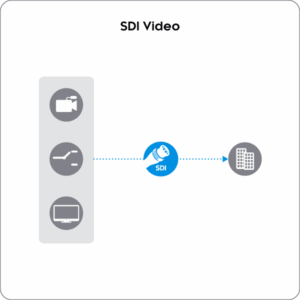What is SDI Video?
SDI (Serial Digital Interface) is a professional video standard designed for high-fidelity, uncompressed digital video transmission. Engineered for the broadcasting industry, SDI enables the transport of video, audio, and metadata over coaxial or fiber-optic cabling with minimal latency and exceptional signal integrity.
Originally defined by the Society of Motion Picture and Television Engineers (SMPTE), SDI supports a range of video formats from standard definition (SD) to ultra-high definition (UHD). Its robustness and plug-and-play functionality make it an essential component of live production, studio environments, and traditional broadcast workflows.
